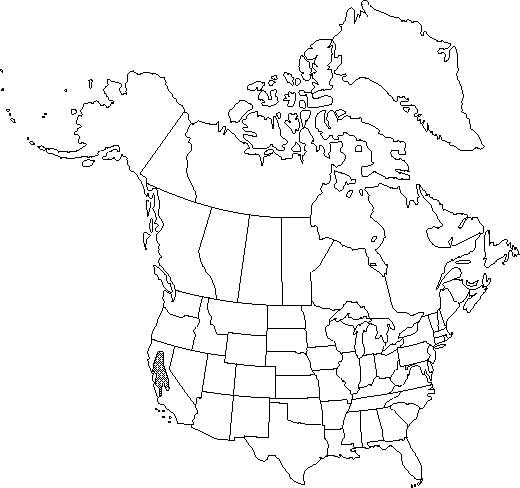Delphinium variegatum subsp. variegatum
Stem: base densely long-pubescent. Inflorescences usually with fewer than 10 flowers per branch. Flowers: sepals deep royal blue, rarely white or lavender, lateral sepals 10-25 mm; lower petal blades 4-11 mm. 2n = 16, 32.
Phenology: Flowering spring.
Habitat: Grassland, open oak woods
Elevation: 20-800 m
Discussion
Some populations of Delphinium variegatum subsp. variegatum may be found on serpentine; they are not well marked morphologically and are not recognized as distinct taxa. This taxon is one of the most commonly encountered plants in California, plants at times coloring foothills of the Coast Ranges and Sierra Nevada. Hybrids with D. hansenii, D. hesperium, D. parryi, and D. recurvatum are known.
Delphinium variegatum has sometimes been confused with D. hansenii or with D. hesperium. Distinguishing features may be found in discussion under those taxa. Plants recognized under the name variegatum exhibit considerable morphologic variation. This variation could not be correlated, however, in such a way as to make defensible taxonomic segregates within D. variegatum subsp. variegatum. Further study may indicate some means of consistently recognizing some phases. For instance, the type specimen of D. variegatum forma superbum Ewan represents a phase with huge flowers. Plants with this feature may be found scattered almost throughout the range of D. variegatum subsp. variegatum (either as isolated plants or as populations made up largely of this morphotype); they are most common in San Francisco Bay area. The type specimen of D. subnudum represents plants with few cauline leaves, a feature that also appears apparently at random throughout the range of subsp. variegatum. Type specimens (isotypes) of D. emiliae appear to be plants introgressed with D. hesperium. The type specimen of D. apiculatum represents the most common and widespread phase of subsp. variegatum, with flowers intermediate in size between those of the type specimen of D. variegatum and those of D. variegatum forma superbum.
Selected References
None.

